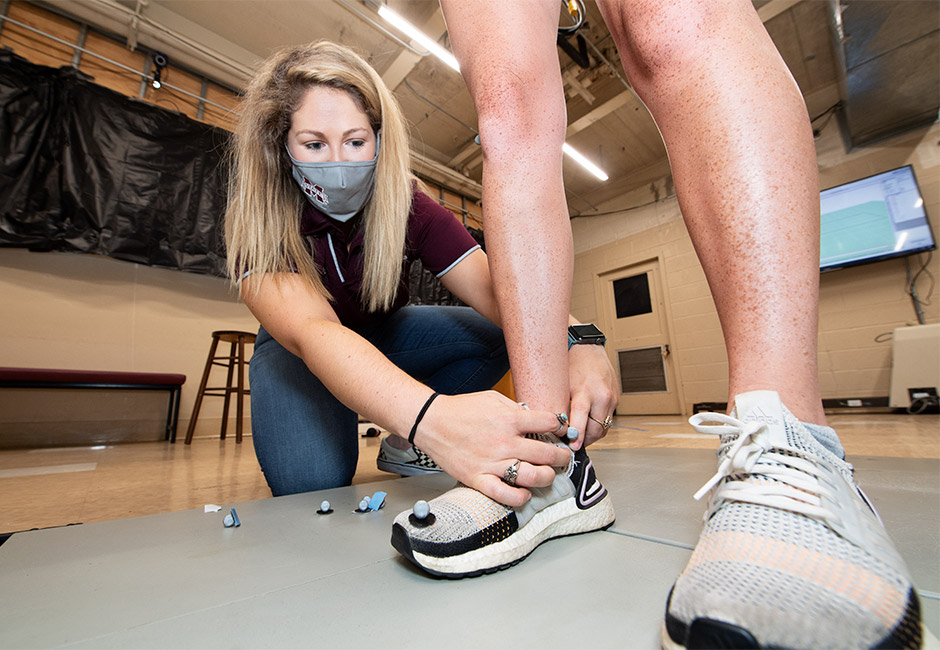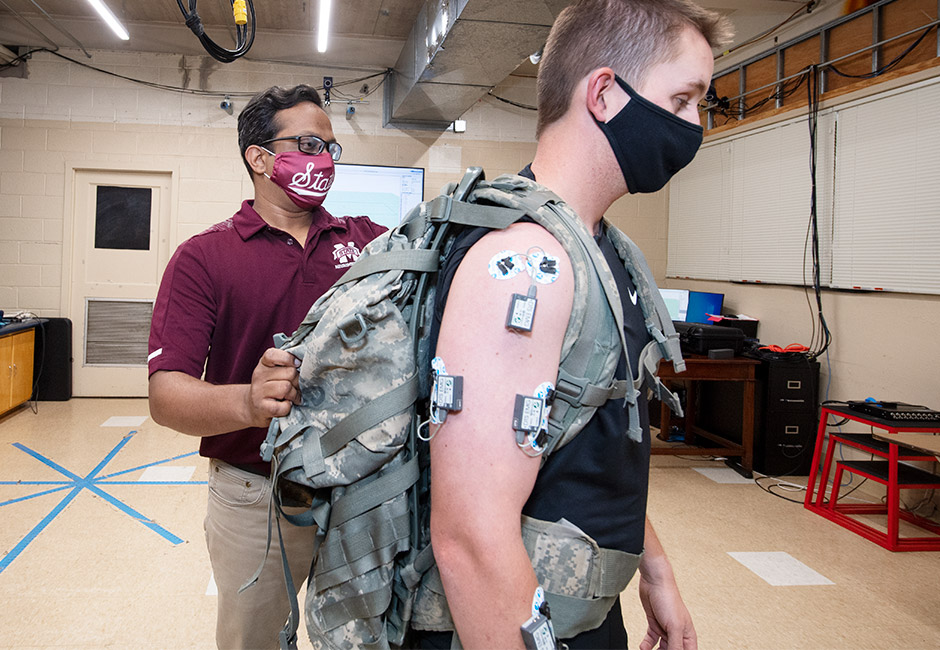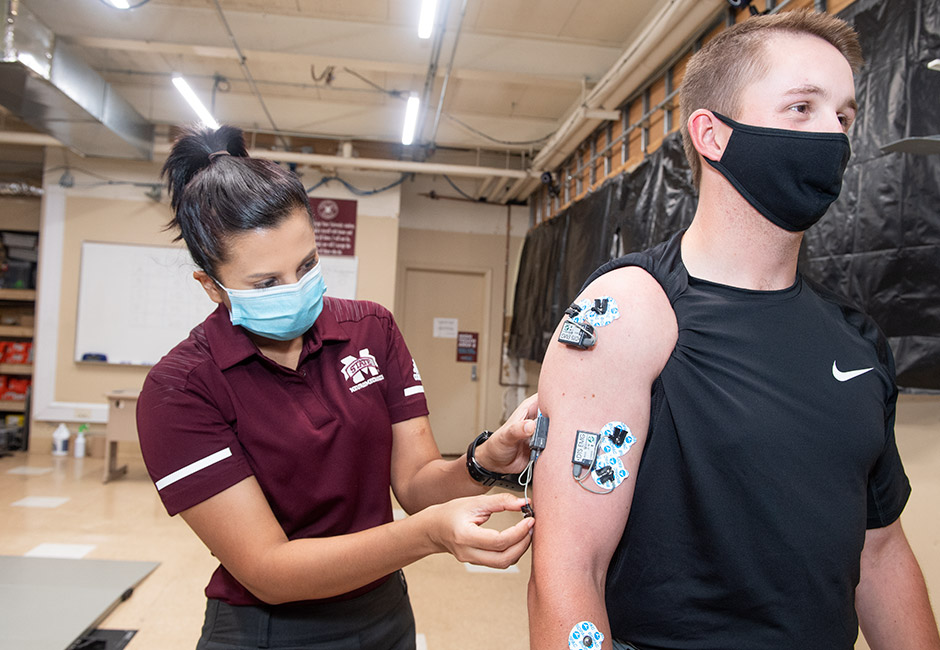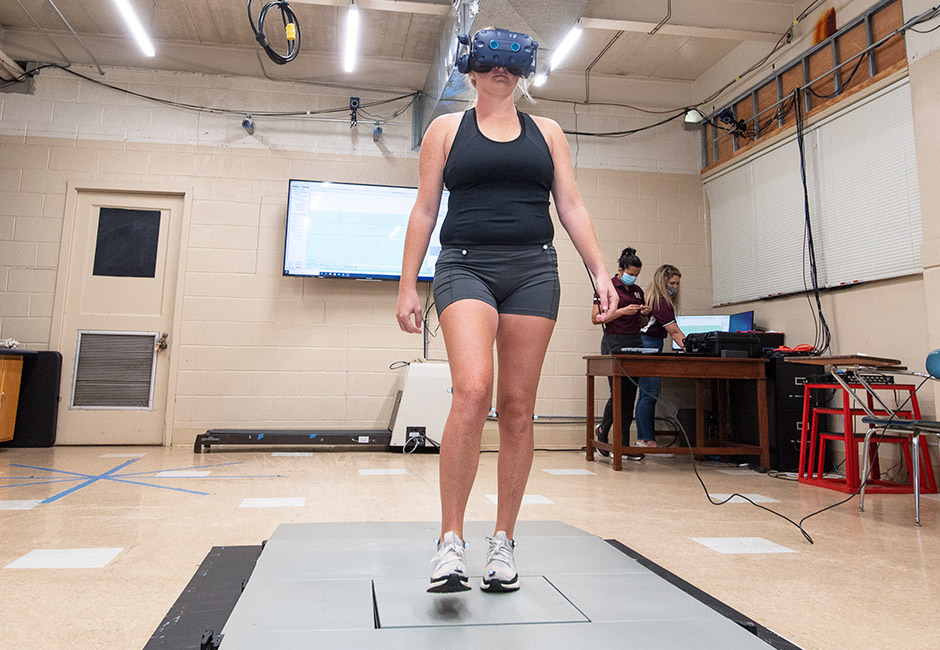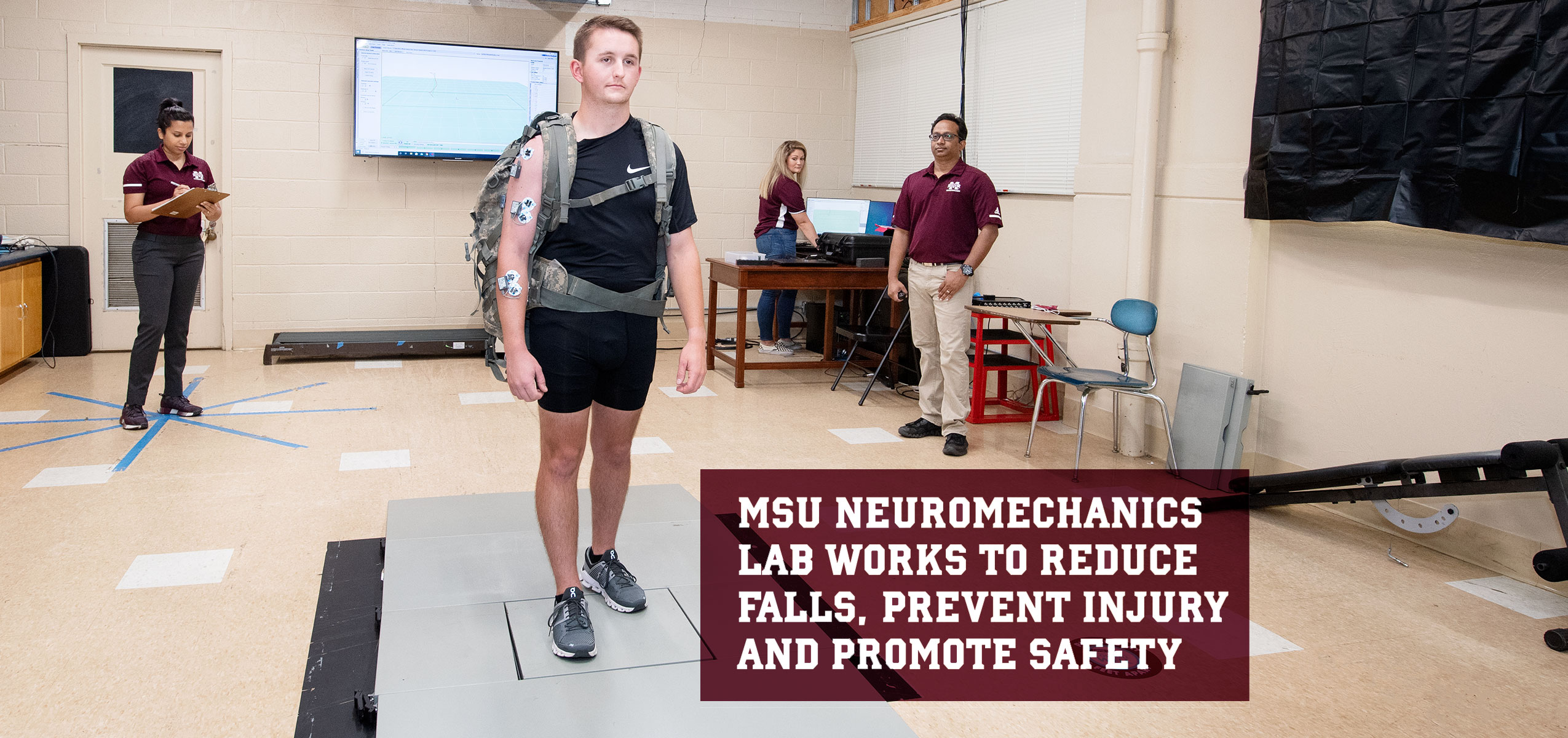
Luke Ramsey, a senior kinesiology major from Greenville, walks while carrying a heavy load so sensors can detail the way his body responds to a changing environment. Neuromechanics Lab graduate students Sachini Kodithuwakku, a native of Sri Lanka, left, and Alana Turner of Mendenhall help collect data as lab co-director Harish Chander looks on.
When Harish Chander joined the Mississippi State Department of Kinesiology in 2014, he got the keys to a former classroom in McCarthy Gymnasium. The space was mostly empty, but full of potential for a laboratory that would generate new knowledge of neuromechanics—a science that combines neurology and biomechanics to explain human movement.
Six years later, the space is filled with state-of-the-art biomechanics equipment and students of all levels conducting research that will help reduce falls in the workplace and with the elderly, identify potential workplace safety hazards, improve athletic performance, and help children with special needs improve their movement patterns.
“The goal of all this is to try to address and prevent falls, promote safety and prevent injuries,” Chander said. “We’re trying to address a diverse real-world population. Research that we’re doing also turns into evidence-based practice for physical therapists, occupational therapists, ergonomists, occupational nurses and other health care professionals.”
When a person slips or falls, some broad details of what caused the incident are immediately known, like whether the surface was slick or a step was missed. It’s the small details of what happens before and during a fall that interest MSU Neuromechanics Laboratory researchers. To have a comprehensive analysis, they use a 3D motion capture system. It’s the same concept used by Hollywood studios to bring action heroes to life in movies like “The Avengers.” While the studios animate the captured movement for cinematic feats, researchers at Mississippi State use their recorded images to study how the body responds to different environments and falls.
“We have done successful research on preventing falls in occupational settings such as construction, roofing, military and firefighting, as well as in geriatric populations,” Chander said. “Falls are the top cause of fatal and nonfatal injuries in occupational and geriatric populations. We are trying to prevent injuries from happening in the first place.”
In the lab, researchers use glycerol to create a slippery environment similar to what workers might see in a restaurant, food processing facility, automotive shop or other environments. They then have test subjects walk and move on that slick surface with and without knowledge of the environment to examine how the body responds to those conditions over time.
The MSU researchers are also using digital environments for study. The lab recently acquired virtual reality equipment, which is being used to virtually place people in settings such as roofing and construction sites. Chander said the technology could be incorporated into training for companies.
“If you want to prevent yourself from falling, you need to get exposed to falling in a controlled environment,” Chander said. “Construction and roofing have high rates of fatal injuries, in part because workers are being recruited with no prior experience. Virtual reality can let them safely practice being in that environment.”
The lab has proven to be appealing to undergraduate students, with more of them showing interest in the work than Chander can have working in the lab. However, he helped to create a student club called Neuromechanics Research Core to keep students engaged with the lab.
Alana Turner, a doctoral student in kinesiology, worked in the lab while pursuing a bachelor’s and master’s in the field with concentrations in clinical exercise physiology and disability studies, respectively. She said that experience drove her interest in research and pursuing a career in academia while also exposing her to the real-world applications of the work.
“You can sit in class all day, but everything clicks once you’re in the lab,” Turner said. “Being able to see joint kinematics and the skeleton through the motion capture system lets you see more clearly how the body works. I’m looking forward to working with the virtual reality equipment because that has big potential for training people with autism.”
Chander practiced physical therapy in India before moving to the U.S. to attend graduate school at the University of Mississippi where he earned master’s and doctoral degrees. He said that while he enjoyed working as a physical therapist, he has a passion for research and mentoring. Several of his students have won campus-wide awards for their contributions to teaching and research, and many graduates are now working in academia, professional sports or private industry.
Sachini Kodithuwakku, a doctoral student who earned a master’s degree in kinesiology from MSU, researches balance, posture, gait and falls. For her master’s degree, she primarily worked with athletes, but her doctoral work focuses on preventing falls and injuries in workplace settings. She said that while the populations may be different, the lessons and concepts learned by studying one group can often be applied to the specific needs of other populations.

Local middle school student Cameron Knight walks across a surface in the Neuromechanics Lab, allowing his movement to be recorded in a motion capture system. One area of the lab’s research aims to improve motor skills in children.
“The fields are diverse, but the concepts are the same,” Kodithuwakku said. “We’re mostly looking at the same parameters and using the same instruments but with different people.”
With plans underway to construct a new building for the Department of Kinesiology near the Joe Frank Sanderson Center, the Neuromechanics Laboratory will move in the coming years to a state-of-the-art facility. However, as the lab has shown through its growth from a McCarthy classroom, a lab is much more than the physical space it inhabits.
“We have really cool research equipment, and our students are successful, finding jobs and getting recognized for their work,” Chander said. “More people are recognizing the work we do here, which will help the research be applied in real-world settings. All of that combined is what a lab should be.”
By James Carskadon | Photo by Beth Wynn

